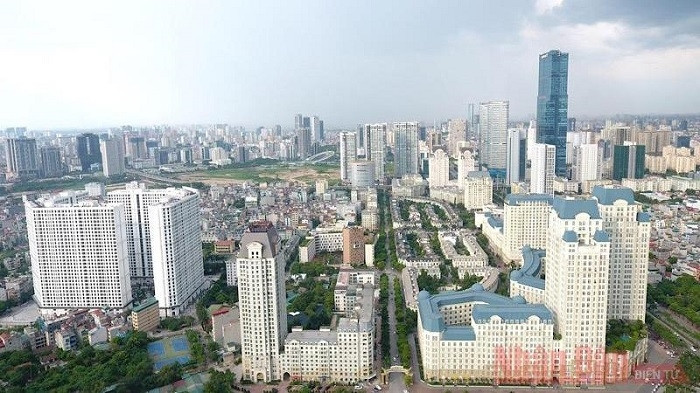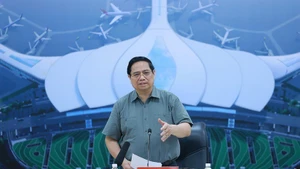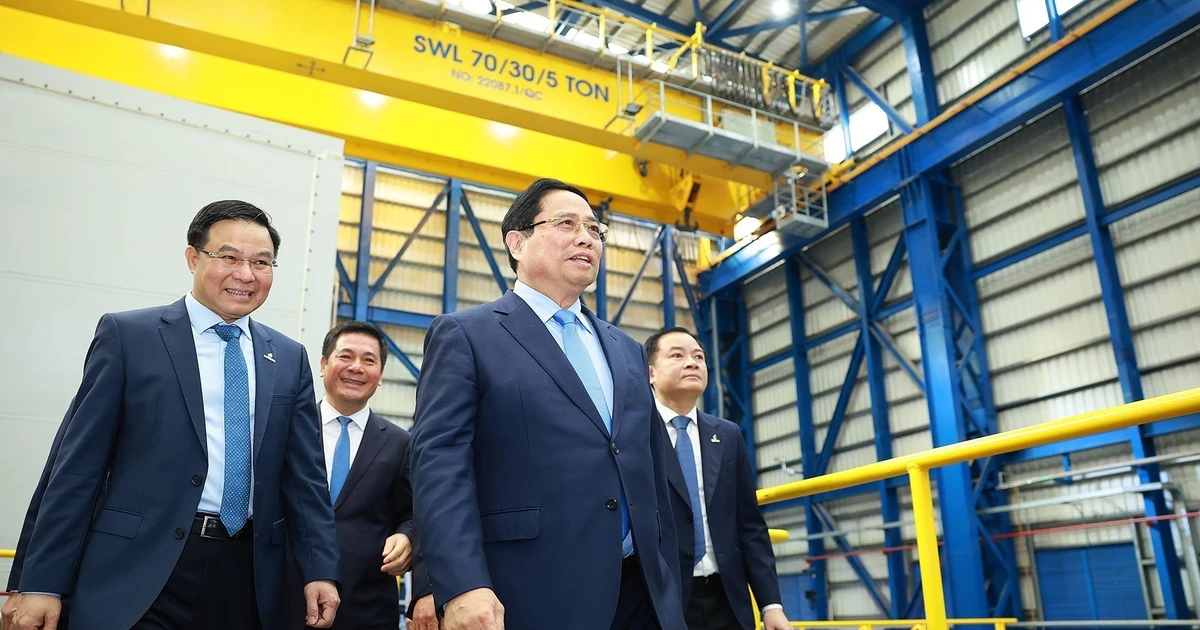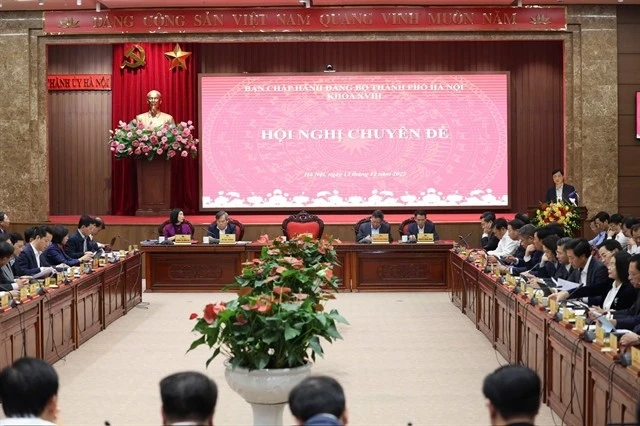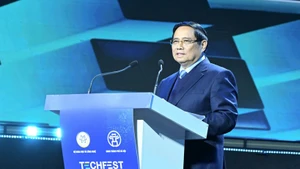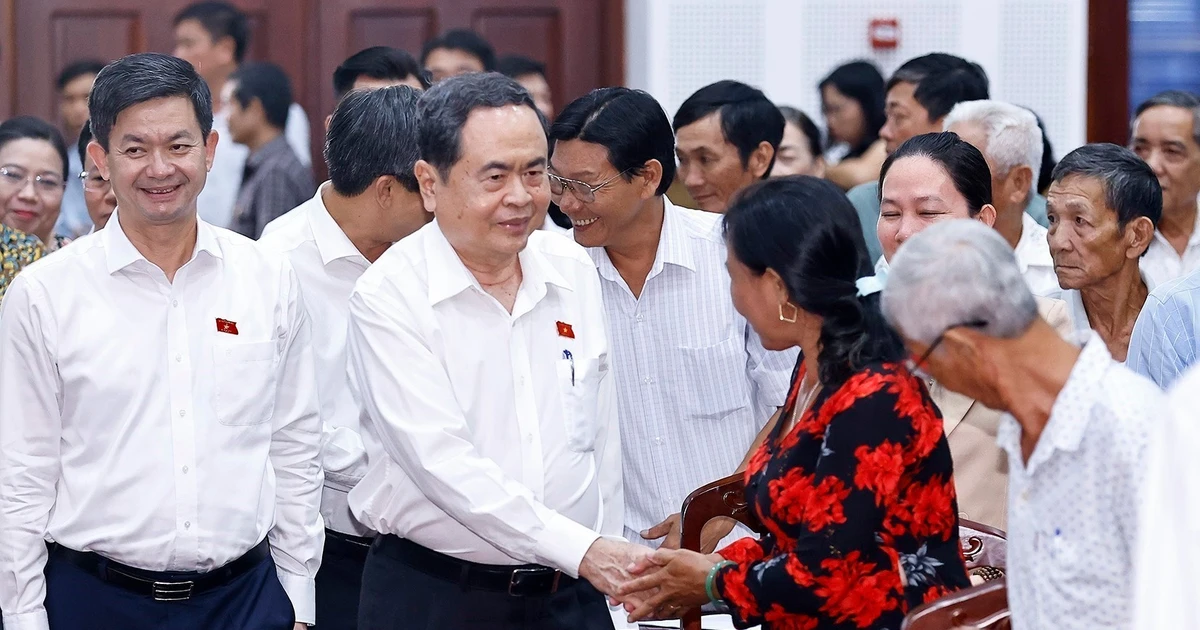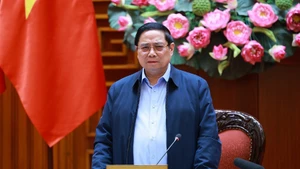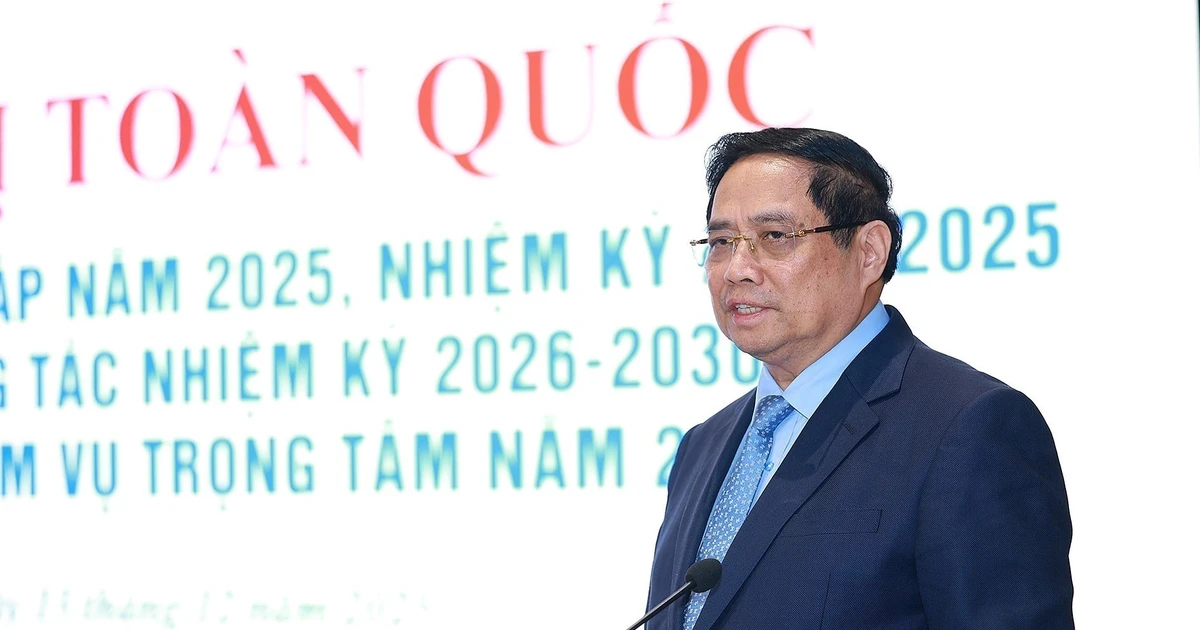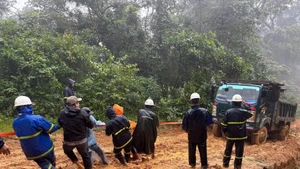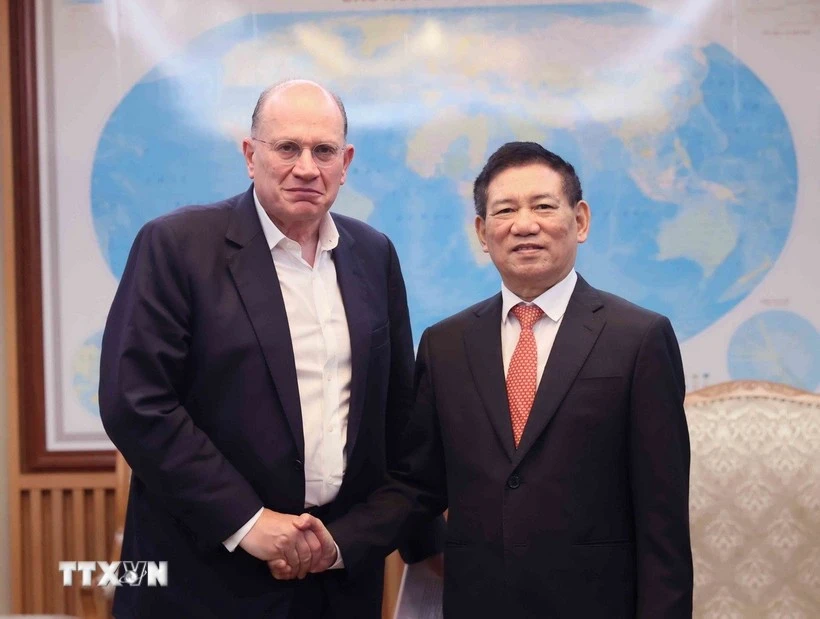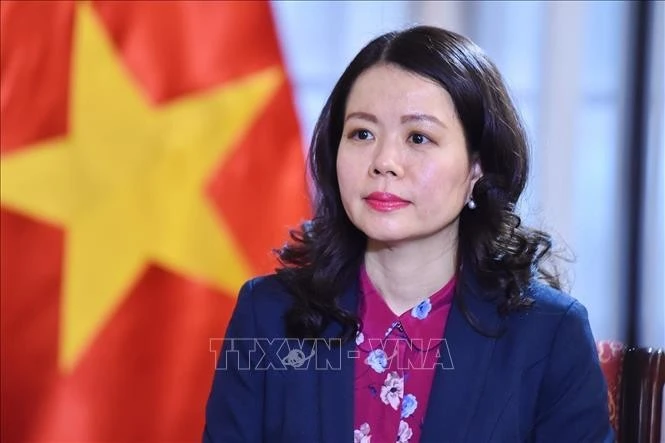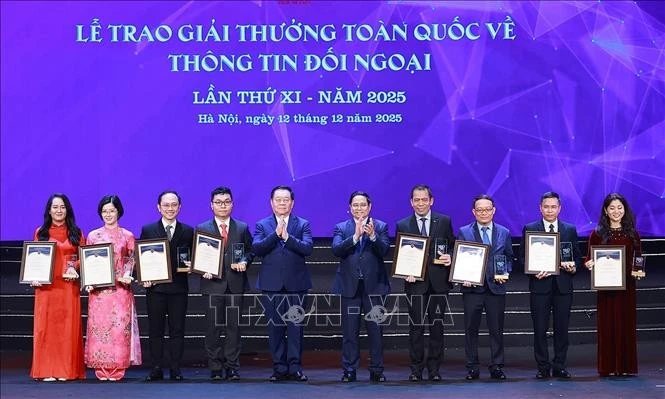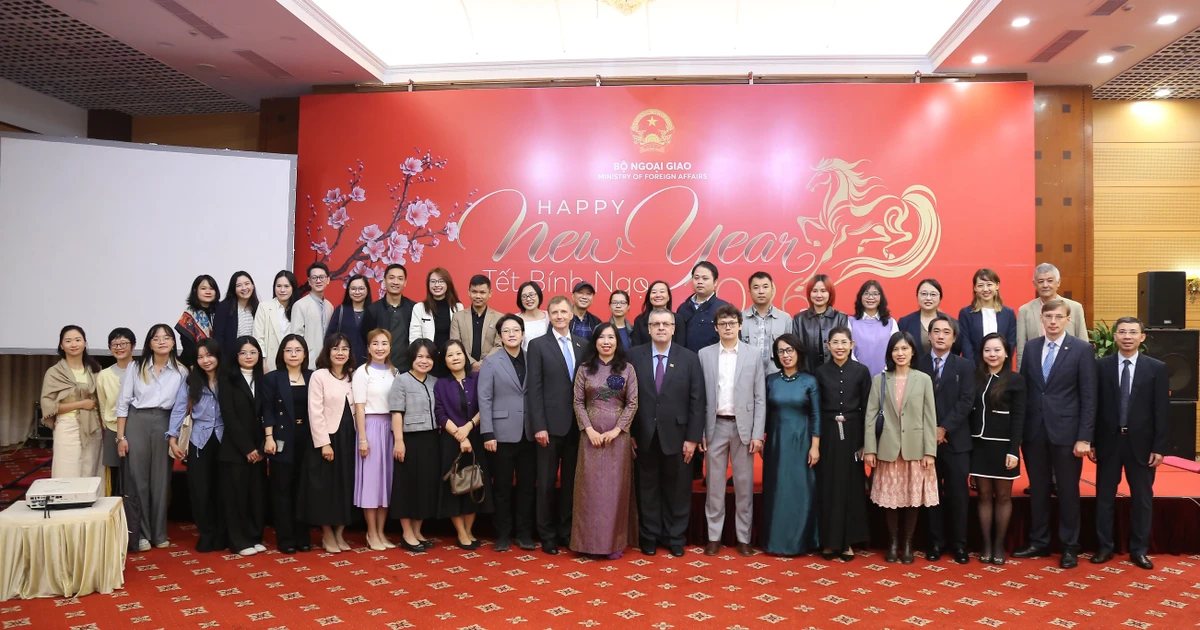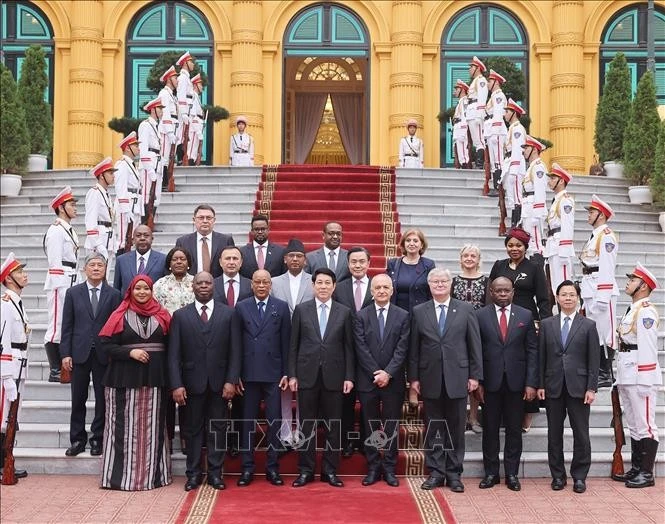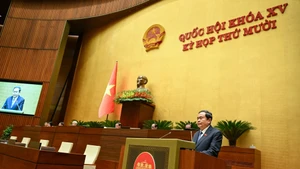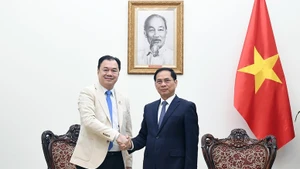On the occasion of the 1010th anniversary of Thang Long - Hanoi (1010-2020), Hue, who is also a Politburo member and the head of the Hanoi National Assembly Deputies’ Delegation, has written an important article. Nhan Dan Online introduces the full-text as follows:
In 1010, King Ly Thai To moved the capital from Hoa Lu (now in Ninh Binh province) to Dai La (Hanoi now) and renamed it Thang Long (Flying Dragon) with the aspiration of a sustainable and prosperous country and its people enjoying peace and happiness. The historic decision, with the foresight of an outstanding intelligent king, opened up a period of brilliant development for the capital of Thang Long and the Dai Viet (Great Viet) nation (the old name of Vietnam).
Not a coincidence but an inevitability, the architectural heritage belonging to the Ancient Citadel of Thang Long (including the ancient citadel itself and the archaeological monuments area at No. 18 Hoang Dieu street) was recognised by UNESCO as a World Cultural Heritage just before the great celebration of the 1,000th anniversary of Thang Long - Hanoi in 2010. And before the 1,010-year milestone, in 2019, Hanoi was honoured by UNESCO as one of 66 "Creative Cities" in the world.
Over the past 10 years, after expanding its administrative boundaries, through the two city Party congresses, the tradition of Civilisation, Heroism, Peace and Friendship has always been the spiritual foundation for Hanoi to make any decision regarding its development and the realisation of the goal of building a rich, beautiful, civilised and modern capital, all for the development of the nation and for the happiness of people.
The expansion proves the appropriacy of an era-scale decision, helping Hanoi exploit its great values and resources to strongly develop to a new level, with a new position and strength. The Thang Long - Hanoi culture is intimately combined with the ancient culture of the new lands it absorbed during its expansion, thus creating more soft power and adding new vitality to Hanoi to develop more rapidly and sustainably.
The most obvious evidence is that all 16 targets of the Resolution of the 16th City Party Congress have been realised, of which three targets were exceeded and reached their set plan two years in advance, they being the proportion of communes meeting new rural area construction standards (by the end of 2020, striving to have 10 districts and 371 communes meeting new rural standards, reaching 96.1%), the rate of public schools meeting national standards (reaching 75%), by the end of 2020 basically the city has no poor households (while the target for the whole term is below 1.2%). Hanoi increasingly deserves its role as a major centre regarding economic development and international transactions, acting as the development engine of the Red River Delta and the whole country. Although accounting for only 1% of the nation’s total area and 8.5% of the population, Hanoi contributes more than 16% of GDP, 18.5% of budget revenue, 20% of domestic revenue and 8.6% of total export-import turnover of the entire country, with per capita income estimated at US$5,420 this year, up by 1.5 times compared to 2015 and 1.8 times higher than the national average.
Along with economic growth, political security, social order and safety in the capital are always guaranteed, the efficiency and effectiveness of management and administration of local government have been improved, while Party building and leadership of Party Committees at all levels in the city have been implemented synchronously, achieving important results. Hanoi has extended cooperative relations with localities across the country in line with the spirit of "Hanoi devoting itself to the whole country", while foreign relations have created many important benchmarks to help raise the prestige and position of the capital in the region and around the world.
The original cultural values and those of the new era continue to build and shine. Hanoi is the first locality in the country to complete the total inventory, assessment, classification and protection of intangible cultural heritages with 5,922 monuments and 1,793 intangible cultural heritages. New cultural spaces such as pedestrian, mural and book streets have been put into operation. These factors are a strong foundation for Hanoi to implement activities to preserve and restore its cultural heritages and craft villages, while creating creative spaces to nurture young talent and expand the title of a "Creative City" into the political, cultural and social life, so that culture really is the driving force for innovation, creativity, and smart city building.
With the motto of serving the people, the city has actively reformed administration and developed e-government. In 2019, its Public Administration Reform Index (PAR INDEX) ranked second among all provinces and centrally-run cities (up seven places compared to 2015), reaching 84.64% of the workload. The Provincial Competitiveness Index (PCI) maintained its ranking at ninth out of 63 provinces and cities nationwide. Creative start-up movements are spreading strongly in the community. Hoa Lac Hi-Tech Park marked the formation of an hi-tech industrial park ecosystem with a synchronous production chain to produce "Make-in-Vietnam" products.
The city has been realising its vision for a green city as it reaches its goal of (two years before the deadline of the programme) planting 1 million trees, while continuing to plant 600,000 more in the programme’s second period during 2019 and 2020. Hanoi will be more bright, green, clean, and beautiful thanks to the participation of the whole community through such movements as "streets with flowers, houses with numbers, streets with names", as well as walls and electric booths "blooming" with flowers, in addition to mural alleys and recycling garden models.
The strength of a land of convergence is extremely rich and diverse, combined with the resilience of the new era with a dynamic and creative development mindset, making Hanoi one of the 10 safest and most attractive destinations in the world. Hanoi has never had development like today. The city has friendly relations and cooperation with more than 100 capitals and major cities around the world. The values of a City For Peace, a symbol of a capital that survived war and has closed off the past and opened itself up for international integration and development continue to be marked. In recognition of this, Hanoi was chosen as the venue for the second US-DPR Korea summit in 2019.
The sounds of peace and friendship spread naturally in Hanoi when visitors arrive not only ordinary people, but also heads of state of the world's leading countries, diplomats and great politicians, all can take a leisurely jog through its small alleys and streets, or visit a popular store in the Old Quarter to buy some souvenirs, or just relax on the sidewalk enjoying a cup of dip coffee or a rustic bun cha dish (grilled pork and noodle), with a peaceful and friendly life surrounding. According to statistics, the world has around 29 thousand-year-old cities, but the attractions Hanoi offers are unique.
Thang Long - Hanoi welcomes its milestone of a 1,010-year-old capital city at a very special moment when it is about to hold the 17th City Party Congress, term 2020-2025.
The political report of the 16th City Party Standing Committee to be submitted to the 17th City Party Congress stated the overarching theme of “building a clean and strong party committee and political system; arousing will, bringing into play a thousand-year tradition of civilisation, heroism, and the strength of the great unity bloc in the city; promoting innovation, creativity and international integration; building the capital city into an increasingly prosperous, beautiful, civilised and modern place”. The traditional values of Civilisation, Heroism, Peace and Friendship are surrounded by a spirit of innovation and creativity so that Hanoi can be in tune with the development of the Fourth Industrial Revolution.
The goal of Hanoi from now until 2025 is to develop quickly and sustainably towards a green, smart, modern and highly competitive city in the country and the region; while basically completing industrialisation and modernisation and having per capita GRDP from US$8,300 to 8,500. This is a difficult goal, requiring high determination in implementation, as well as a new, creative way. The city has identified five key tasks and selected three breakthroughs in its infrastructure; institutions, mechanisms, policies; and culture and human resources.
Arousing its internal resources and integration capabilities, while continuing to affirm the new stature and position of the capital city, Hanoi identifies and harmoniously addresses economic growth with socio-cultural development, while promoting the building of elegant and civilised Hanoians who are comprehensively developed with deep human values and patriotism, as well as having respect for the law, discipline and national pride, along with being rich in will and aspiration for development. This is the endogenous strength and great spiritual driving force developing the capital into the centre of innovation and creativity of the whole country, an innovation centre in the Southeast Asia region, truly a UNESCO-recognised Creative City.
At the working session between the Politburo with the Standing Committee of Hanoi City Party Committee on September 19, 2020 on the preparation of the 17th City Party Congress, Party General Secretary and State President Nguyen Phu Trong affirmed that when talking about Hanoi, we must mention key fields, with economic development as an important one, but Hanoi must focus on culture, as the city must be civilised and elegant. Hanoi is first of all a political and cultural centre typical of Vietnamese culture. It should develop the economy but there must be cultural development and planning. The requirements for Hanoi cannot be as with other localities, but must be higher than others. Hanoi must take the lead, be a model and an example in all aspects.
In order to fulfil that glorious task and heavy responsibility, the Hanoi Party Committee continues to promote the traditions of solidarity and unity across all local authorities and socio-political organisations, as well as the exemplary responsibility and bravery of all officials, civil servants and employees, in their service performance, wholeheartedly taking care of the people's lives, while promoting the strength of the entire unity bloc in all the city’s affairs.
Proud of the Heroic Capital – the noble title that the Party, State and people have given to Thang Long - Hanoi, we deeply understand that the 1,010 years of history with its core values of Civilisation, Heroism, Peace, Friendship and Creation is the biggest driving force to multiply confidence, so that every citizen of Hanoi will continue to join hands for a higher goal, that is, making Hanoi one among the creative capitals in Southeast Asia, contributing to the whole country’s task of fulfilling its aspiration of developing into a prosperous and happy country, thus realising the will of dear President Ho Chi Minh when he said: “The whole country looks to our capital. The world also looks to our capital city. We must all strive to maintain order and security, making our capital a peaceful, beautiful and healthy capital, both physically and mentally.”
The 1,010th anniversary of Thang Long - Hanoi is a new milestone that opens up for our capital a bright future and a new higher, more stable stature under the light of the Ho Chi Minh era, allowing the capital to continue radiating its pride.
